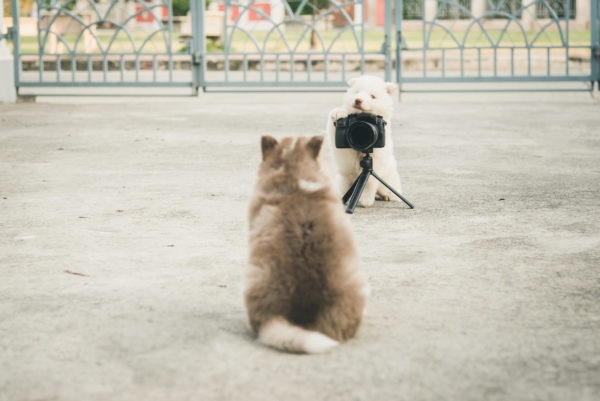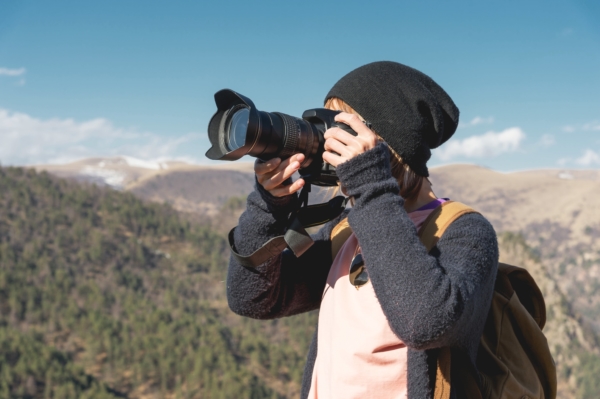
Professional Pet Photography Outline
-
- Come prepared! – Here is a basic layout of what you’ll need for your pet photoshoot
- Treats
- Toys
- A Tripod
- Leash
- Water
- Flashlight
- Camera and equipment
- A sidekick (other than your pet – lol)
- Come prepared! – Here is a basic layout of what you’ll need for your pet photoshoot
- Camera Recommendations for Pet Photography
- How to Choose the Right Lens for Pet Photography
-
- Ultrawide Angle Lens
- Telephoto Lens
- Prime Lens
- Polarising Filters
-
- Inside a Pet Photographers Bag
Anyone with a pet knows: Pet photography can be tricky, to say the least.
These days, pet photography has really become its own photographic niche. Whether you’re taking photos of your fur baby, or professional dog show pictures, being able to successfully photograph pets is a major skill.
In addition, it’s also an amazing way to practice your photography skills in general.
Achieving the desired photo by placing your pet in the best pose, getting them to stay put and worrying about having the best lighting can all play factors in the struggle.
To help make the process run smoothly, we have some tips and tricks from the pros to utilize when taking pet photography. These tools have helped us up our game, and we’re confident it will help you, too.

Come prepared!
This may just be the biggest part in whether or not your pet photography turns out the way you’d like. Pet’s have a short attention span, make sure to come ready! Here’s a list of some things you may want to bring with you on this type of shoot:
- Treats – This one is self explanatory. You want your pet to stay still and pose for the camera? Bring treats to bribe your dog to pose (sit, shake, stay…) and reward them for their good behavior.
- Toys – As previously stated, toys may help your pet pose and stay put for you. If you want to get some candid shots of your pet, a toy may help as well.
- A tripod – This will aid in keeping your camera still and steady throughout your photoshoots. You can also use a tripod and set you camera on a timer, to capture that loving image of you and your pet together!
- Leash – You don’t want your dog to run away, do you? Bring a lease in case you need to look away for a moment without worrying about your pup going on an adventure of their own – unattended.
- Water – A healthy pet is a happy pet! Keep them (and yourself) hydrated.
- Flashlight – You’ll want this for when the sun goes down, or if you’re looking to shoot some night shots.
- Camera and equipment – Of course!
- A sidekick (other than your pet – lol) – Having a helping hand throughout the process can help lower the stress level. You can benefit even more if this person knows how to use your camera, you can distract your pet while they snap a picture.
Camera Recommendations for Pet Photography
As you may have notices, animals do not typically like to sit still. And although any camera can be used to take pet photography, you are going to want something digital.
This offers you the opportunity to take multiple images, which you can look through and check immediately. A set-up that allows you the chance to chance out lenses and have full control over a range of settings is highly recommended.
We suggest the use of a DSLR camera, as it is a great tool to have as both a pet photographer, and a photographer in general. There are many options out there, including a wide range of lens types, all at your disposal. Along with lenses, there are a plethora of other accessories or pieces of equipment specifically designed for your Nikon or Canon model.

How to Choose the Right Lens for Pet Photography
It’s important to realize that the type of lens you use, directly impacts the way your photos turn out. DSLR camera lenses provide differential focus, which comes directly from the aperture on your piece of glass. The wider the aperture, the less your photo will be in focus.
The background of your image will become more and more blurry, adding extra focus on your pet by cutting out distractions. That said, a wide-angle lens will offer you a broader perspective of the scene as a whole.
The use of a zoom lens will give you the chance to photograph from close and far away, therefore offering the chance to take photos of your pets while staying out of the scene to avoid distracting them.
By purchasing a various range of lenses, you’ll be giving your photography more flexibility. And with more flexibility, comes better and more professional photos.
Here are just a few types of lenses we recommend for the use in Pet Photography:
- Ultrawide Angle Lens: Shooting with this type of lense can yield some amazing effects and perspectives. This lens will not only capture the animal, but also show off the surrounding scene. An example of a great Ultrawide Angle Lens – Canon EF 17-40 f/4L USM.
- Telephoto Lens: By using a Telephoto Lens, you’ll be able to capture scenes without being in the immediate area. This is a great lens for pet photography, because it allows the photographer to stay out of the pets’ zone, to capture fabulous candid shots. It also allows your pet to avoid being distracted by you, your equipment and any funny noises your camera might make. A Telephoto Lens works perfectly for shooting images of someone else’s pet, so as not to startle or scare them during the shoot.
- Prime Lens: A Prime Lens is one with a specific fixed focal length. Due to the fact that you cannot zoom with this type of lens, you’ll have to move yourself around to tighten or loosen your framing. With pet photography, speed is key. With a Prime Lens, it may be difficult to get the frame and focus while chasing the pets around. However, a Prime Lens can offer you incredible quality, resulting in very professional-looking photos. This lens also bestows a wide aperture, which is perfect for low light situations, as well as getting supreme focus in a small area of your shot.
- Polarising Filters: When using a Polarising Filter, you’ll be able to darken skies, manage reflections, and remove glare from any reflective surfaces, such as metal from cars or sitting water. When you are shooting pet photography, you’ll more than likely be outdoors. Use this filter to darken and bring out more color and detail from your skies. You will also notice that a Polarising Filter will enrich the colors of your subject.
Inside a Pet Photographer’s Bag
Being a photographer, it’s hard to imagine having anything extra in your bag (when you already have so much equipment in there!). But you better make room if you’re looking to be a pet photographer.
You’ll need all of the lenses you want to bring with you, as well as an off-camera flash and camera cleaning kit.
In addition, you’ll need to pack toys and treats for the canines participating in your photoshoot. With dog treats in hand, you’ll be much more approachable. The pets will also take better direction if they know they will get something out of it.
Creating your own business cards and bringing them along with you is also a great idea. You never know who you might encounter, you’re next customer may be walking their pooch at the same park where you’re taking photos. If you plan on being a pet photographer for a living, potential clients are always right around the corner (or around the playground, in this case).
We recommend bringing extras of everything, to ensure you won’t miss that perfect shot due to a dead battery.





